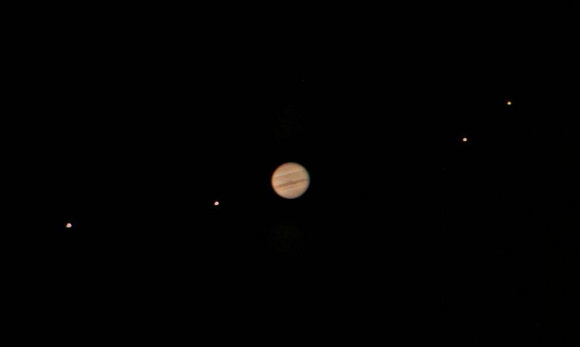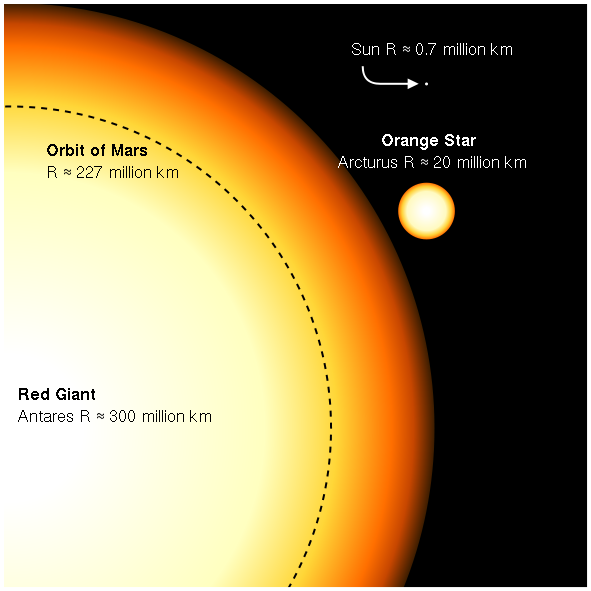These next three evenings – September 13 to 15, 2018 – watch for the waxing crescent moon to travel eastward through the zodiac. The moon pairs up with the dazzling planet Jupiter on September 13, and then moves between Jupiter and the red star Antares on September 14. Finally, on September 15, the moon sweeps to the north of Antares, the heart of the constellation Scorpius the Scorpion.
The featured sky chart at top is especially designed for mid-northern North American latitudes. Even so, you can use the moon to locate Jupiter and Antares from virtually anywhere worldwide. From the Southern Hemisphere, Antares appears more directly above Jupiter, rather than to the left of Jupiter. But then people in the Southern Hemisphere will see the moon traveling upward (rather than sideways) during these next several nights.
Jupiter is the giant planet of our solar system whereas Antares is an extremely rare red supergiant star. Our companion moon appears as the giant in Earth’s sky because it’s so much closer to us than either Jupiter or Antares. Jupiter is now about 2,300 times farther away from Earth than is our moon, and Antares lies way out there at around 6 million times Jupiter’s distance.
Jupiter’s diameter is about 11 times the Earth’s diameter. But this figure doesn’t really adequately convey Jupiter’s great size. Square the diameter (11 x 11 = 121) to find out that Jupiter’s surface area is about 121 times greater than Earth’s surface area, and then cube the diameter (11 x 11 x 11 = 1,331) to find out that Jupiter’s volume is some 1,331 times greater than Earth’s volume.

Ever since Galileo first watched Jupiter’s four major moons – Io, Europa, Ganymede and Callisto – in the early 1600s, astronomers noted how very quickly these moons orbited Jupiter. These swift-moving moons let astronomers know right off the bat that Jupiter is way more massive than Earth. In fact, astronomers are able to use these moons to calculate Jupiter’s mass. Here’s how.
Yes, Jupiter is large! Yet our sun’s diameter is about 10 times greater than that of Jupiter. That means the sun has 100 times the surface area (10 x 10 = 100) and 1,000 times the volume (10 x 10 x 10 = 1,000) of Jupiter. So that makes the sun’s volume some 1,331,000 times greater than Earth’s. Wow!

In contrast to the red supergiant star Antares, our sun has no more size than a spark from a bonfire. It is estimated that Antares might have the diameter of 600 to 800 suns. We’ll let the inquiring reader figure out the surface area and volume of Antares relative to our sun.
Bottom line: These next several days – from September 13 to 15, 2018 – let the moon guide your eye to the king planet Jupiter and the red supergiant star Antares.












